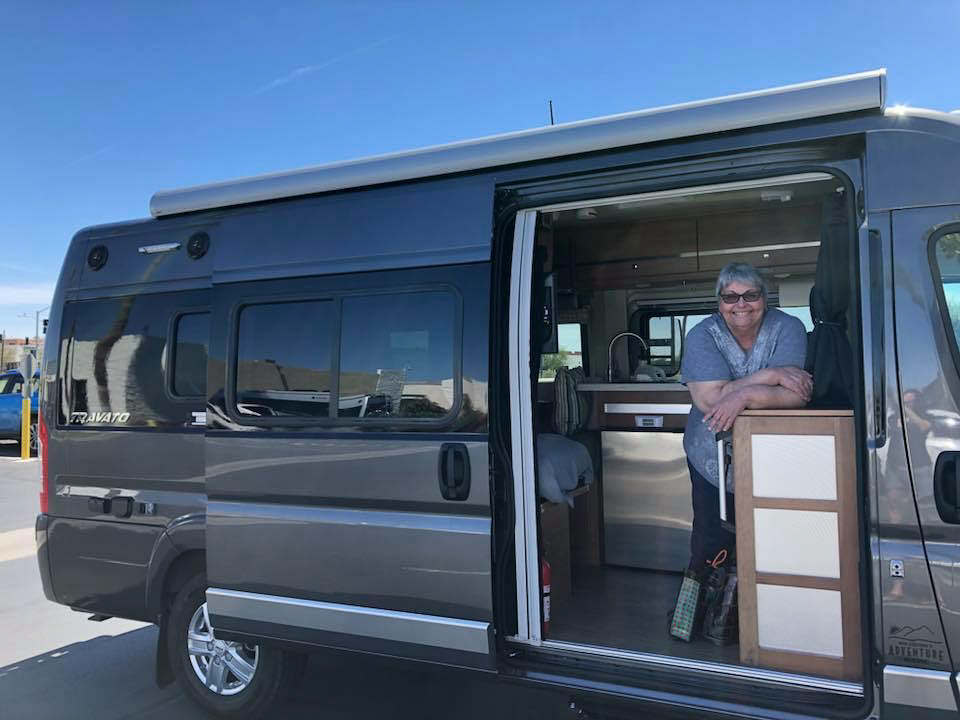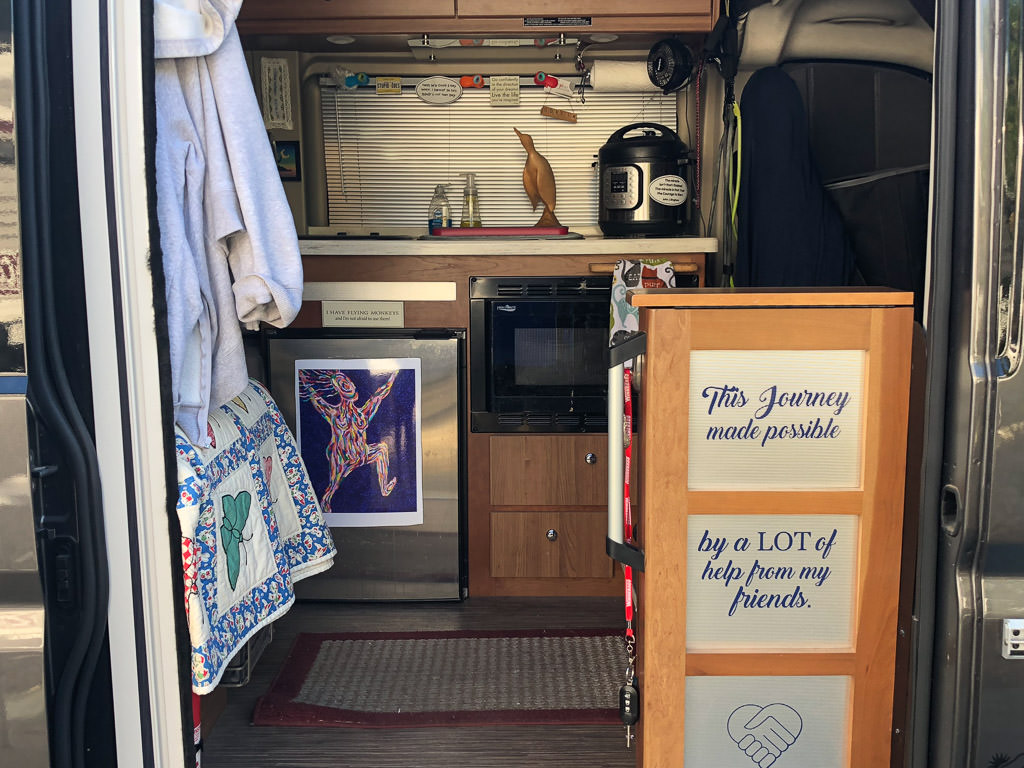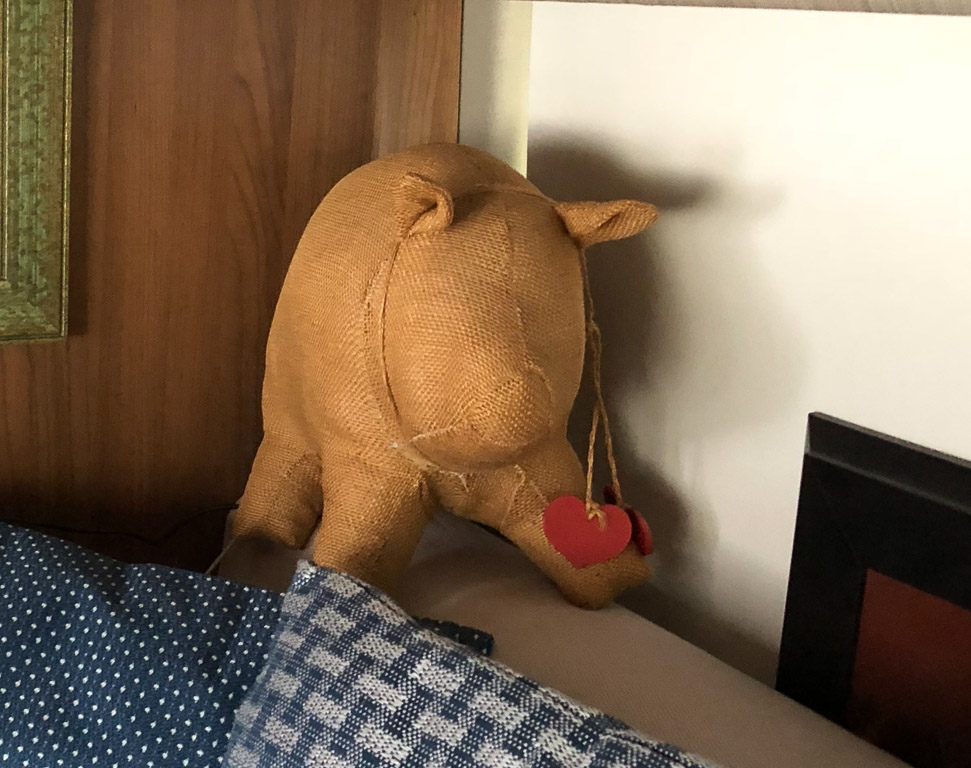
Going Small to Go Big
Nooooo. Not that!
Put that down. Please, put that down.
What was I thinking?
These words, along with the urge to snatch beloved items from the hands of potential buyers, echoed though my brain as people picked over my belongings in a sale of my own planning.
Recently, I sold or gave away almost everything I owned in my quest to downsize my life to fit into a 2016 Winnebago Travato 59K, a Class B van I named Novella. It was painful, upsetting, and very necessary if I was going to move forward with my big plans for retirement. For years, I had been juggling a career as a paralegal in Los Angeles with my career as an author. Once I shed the paralegal job, the plan was that I would live full-time in the Travato, write more, and travel the country meeting my readers and gaining new ones. But my stuff got in the way.

As with most seniors, I had acquired many things over the decades, many of which held deep memories or gave me great pleasure in their beauty or usefulness. I will admit, it was a bit easier on me than on many others seeking to do the same. I didn't have a home to sell, but a large apartment to empty. I also don't have children, avoiding the large quantity of items that are collected over the years by a growing family.
No matter if you have a home or an apartment, getting rid of the things you no longer need or use can be liberating - as can be starting a new chapter in your life. Think of it as going small to go big.
Tips for Making Downsizing Easier:
Start early.
As soon as you know this is your path, begin culling your belongings of the things you don't care about and get rid of them. This will help you focus on the items that matter more to you.
Great places to start are closets. Give your used clothing, accessories, linens, etc. to charities. If you haven't worn something in a long time, out it goes! I was shocked by the amount of clothing I donated in just my first go-through. Yes, first go-through. Plan on culling your clothing many times during the process, and one last time after you move into your RV. I also had a great many books. Those were boxed up and donated to my local library. (Read more first steps to downsizing in this article by another GoLife writer).
Put things aside for family and friends.
Make a pile of items you want to pass along to family and close friends. I had specific boxes for these items, and as I went through my things, certain items went in those boxes. At the end, I packed them up and mailed them to those folks.
For example, my father gave me an antique rocker. I could have sold it, but instead gave it to a close friend who I knew would appreciate it. The same was true of some of my collectibles and art work.
Switch to small appliances.
Replace your favorite kitchen and personal care appliances with smaller, more convenient ones. I had a difficult time letting go of my Ninja food processor, but knew there was no place for it and all its attachments in the van. It was replaced by a Ninja mini-food processor, which my niece gave me as a gift. I changed my large cookware set out for a Magma stackable set, and kept one ceramic baking dish out of many.
My dishes, place settings for eight along with the serving pieces, were exchanged for a four-place setting of nearly indestructible Corel. All my other dishes and glasses were given to charity. There are also a lot of small appliances that now come wired for USB. For example, the small fans I use in my Travato are USB.

Digitize photos.
This can be a very difficult thing for a lot of people. I pulled favorite photos from my albums and scanned them to keep on my computer. Afterwards, I tossed the bulky albums. You might even look into a digital frame to display them in your RV. (Read more tips on digitizing memories here).
Be realistic about collectibles.
Don't expect to get anywhere near what you paid for these types of items if you try to sell them. Collectibles are only worth something to other collectors. I had a lot of collectibles, some of them expensive. Many were sold and some were given to friends and family.
Consider a storage unit.
I opted not to get a storage unit. I wanted to be totally free and untethered. But this is an option for those who want to keep more items than will fit in their RV, or items you cannot bear to part with at the moment. See how you feel in six months to a year. You might find you won't want to keep them after that time and do away with the storage unit. A storage unit can buy you some extra time to consider your options.
Choose special things to bring.
One of the things I decided to do was to take one item along that reminded me of each member of my immediate family, whether those items were of use in the van or not. I have a wood carving of a crane that my brother carved for me a few years before he passed. A stuffed burlap pig sits sentry on the spare bed, a gift from my father just months before he died over twenty years ago. A quilt made for my late mother in 1937 covers my bed in the RV. My closest friends are also represented by small tokens.

Remember, things are physical reminders of memories, not the memories themselves. Memories are stored in your head and your heart. Keeping this in mind will help you let go of the items.
And it's okay to cry.
Finally, in all the stress and chaos of dismantling your home, don't lose sight of your goal. Living in an RV means letting go of things for the purpose of making room for new memories and big adventures.
Sue Ann Jaffarian is the author of several popular mystery series, as well as other novels and short stories. You can visit her on the web at www.sueannjaffarian.com or at www.thenovelrv.com.
Comments
Comments on this post are moderated, so they will not appear instantly. All relevant questions and helpful notes are welcome! If you have a service inquiry or question related to your RV, please reach out to the customer care team directly using the phone numbers or contact form on this page .